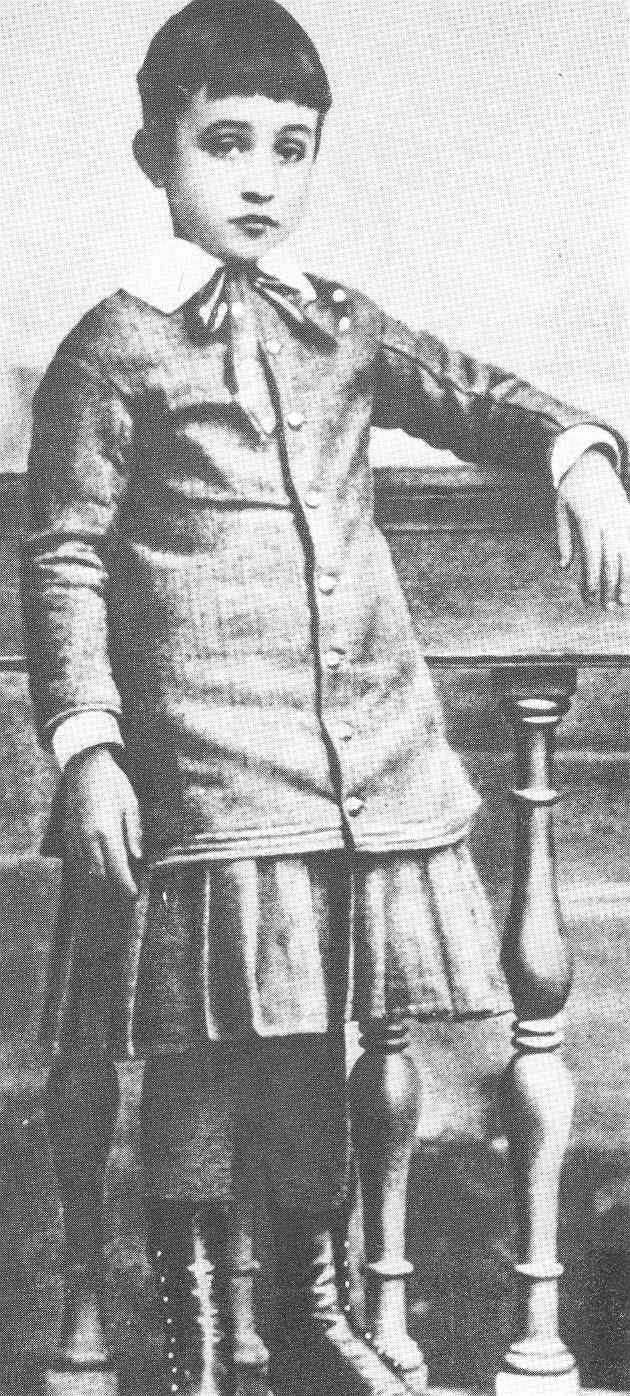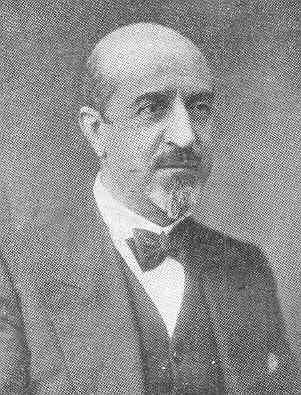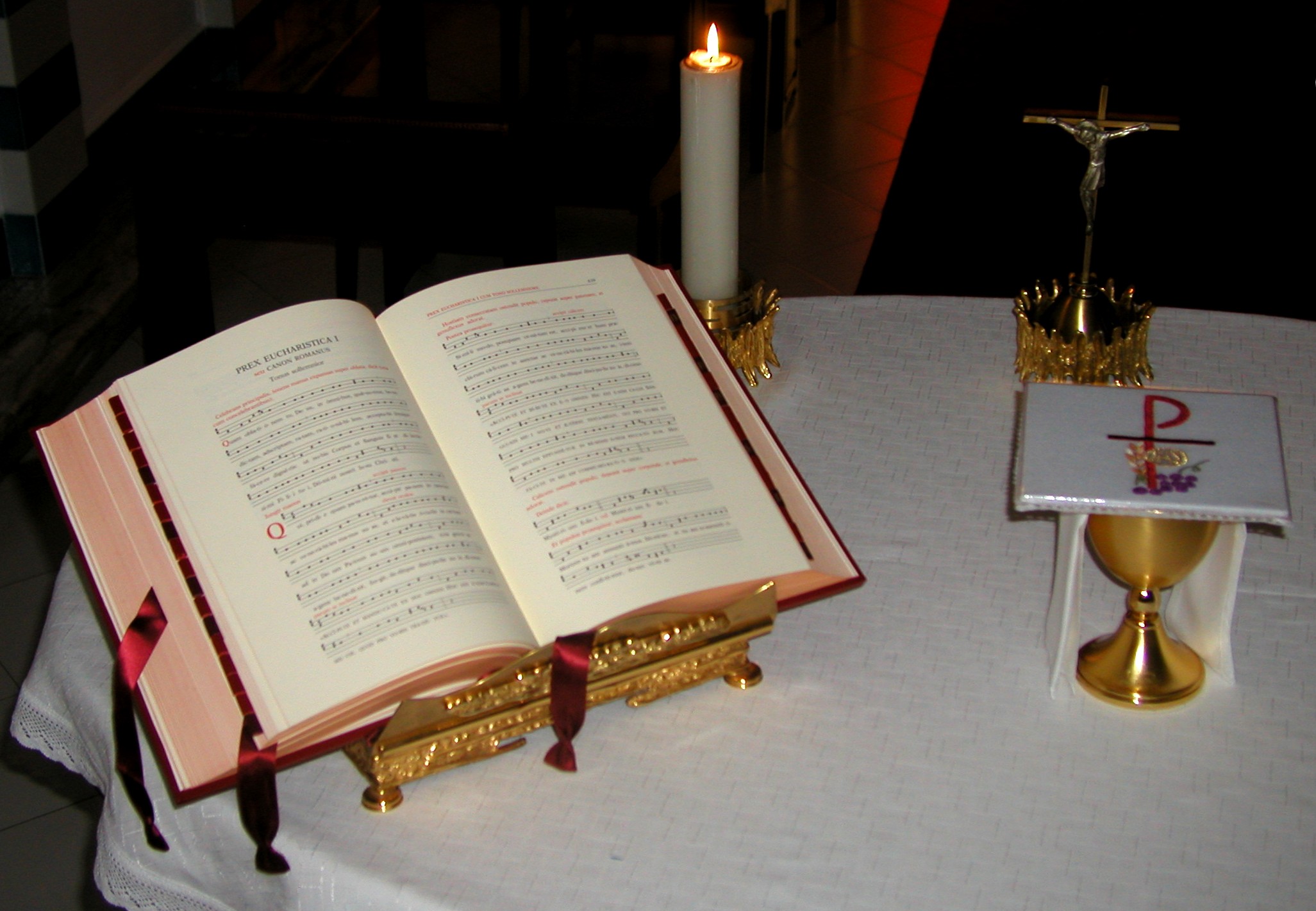|
Station Days
Station days were days of fasting in the early Christian Church, associated with a procession to certain prescribed churches in Rome, where the Mass and Vespers would be celebrated to mark important days of the liturgical year. Although other cities also had similar practices, and the fasting is no longer prescribed, the Roman churches associated with the various station days are still the object of pilgrimage and ritual, especially in the season of Lent. Ancient practice Station days grew out of the early Christian practice of visiting the tombs of the martyrs and celebrating the Eucharist at those sites. By the fourth century, the practice of carrying out an itinerary to various churches of the city began to develop during the days of Lent. In those days it became a tradition for the pope to visit a church in each part of the city and celebrate Mass with the congregation. In the early centuries, the Lenten fast lasted all day, and so towards the evening, the Christians of Rome ... [...More Info...] [...Related Items...] OR: [Wikipedia] [Google] [Baidu] |
Giovanni Di Paolo La Procession De Saint Gregoire Au Chateau Saint Ange
Giovanni may refer to: * Giovanni (name), an Italian male given name and surname * Giovanni (meteorology), a Web interface for users to analyze NASA's gridded data * ''Don Giovanni'', a 1787 opera by Wolfgang Amadeus Mozart, based on the legend of Don Juan * Giovanni (Pokémon), boss of Team Rocket in the fictional world of Pokémon * Giovanni (World of Darkness), a group of vampires in ''Vampire: The Masquerade/World of Darkness'' roleplay and video game * "Giovanni", a song by Band-Maid from the 2021 album ''Unseen World'' * ''Giovanni's Island'', a 2014 Japanese anime drama film * ''Giovanni's Room'', a 1956 novel by James Baldwin * Via Giovanni, places in Rome See also * * *Geovani *Giovanni Battista *San Giovanni (other) *San Giovanni Battista (other) San Giovanni Battista is the Italian translation of Saint John the Baptist. San Giovanni Battista may also refer to: Churches in Italy * San Giovanni Battista, Highway A11, in Florence * San Giovanni Batti ... [...More Info...] [...Related Items...] OR: [Wikipedia] [Google] [Baidu] |
San Giorgio In Velabro
San Giorgio in Velabro is a Catholic church dedicated to St. George on Via del Velabro in the historic center of Rome in the Velabrum and the Ripa district. The church—the result of the 9th century expansion of a previous diaconal building and subsequent remodeling—stands near the Arch of Janus in the small square of the Cloaca Maxima. The location of S. Giorgio is not far from the place where the founding legend of Rome places the discovery of the twins Romulus and Remus by the she-wolf. The façade of the church encroaches upon and incorporates the Arcus Argentariorum, which was completed in 204 AD. S. Giorgo falls within the territory of the parish of Santa Maria in Portico in Campitelli and is a rectory entrusted to the Canons Regular of the Order of the Holy Cross as well as a titular church, whose cardinal-deacons over the years have included Pope Boniface IX and Pope Martin V, as well as Pierre de Luxembourg ( pseudocardinal of the Antipope Clement VII) and ... [...More Info...] [...Related Items...] OR: [Wikipedia] [Google] [Baidu] |
Pope John XXIII
Pope John XXIII (born Angelo Giuseppe Roncalli; 25 November 18813 June 1963) was head of the Catholic Church and sovereign of the Vatican City State from 28 October 1958 until his death on 3 June 1963. He is the most recent pope to take the pontifical name "John". Roncalli was among 13 children born to Marianna Mazzola and Giovanni Battista Roncalli in a family of sharecroppers who lived in Sotto il Monte, a village in the province of Bergamo, Lombardy. He was ordained to the priesthood on 10 August 1904 and served in a number of posts, as nuncio in France and a delegate to Bulgaria, Greece and Turkey. In a consistory on 12 January 1953 Pope Pius XII made Roncalli a cardinal as the Cardinal-priest of Santa Prisca in addition to naming him as the Patriarch of Venice. Roncalli was unexpectedly elected pope on 28 October 1958 at age 76 after Pope Pius XII's death. Pope John XXIII surprised those who expected him to be a caretaker pope by calling the historic S ... [...More Info...] [...Related Items...] OR: [Wikipedia] [Google] [Baidu] |
Pope Pius XII
Pope Pius XII (; born Eugenio Maria Giuseppe Giovanni Pacelli; 2 March 18769 October 1958) was the head of the Catholic Church and sovereign of the Vatican City State from 2 March 1939 until his death on 9 October 1958. He is the most recent pope to take the Papal name, pontifical name "Pius". The papacy of Pius XII was long, even by modern standards; it lasted almost 20 years, and spanned a consequential fifth of the 20th century. Pius was a diplomat pope during the destruction wrought by the Second World War, Aftermath of World War II, the recovery and rebuilding which followed, the beginning of the Cold War, and the early building of a new International order, international geopolitical order, which aimed to protect human rights and maintain global peace through the establishment of international rules and institutions (such as the United Nations). Born, raised, educated, ordained, and resident for most of his life in Rome, his work in the Roman Curia—as a priest, then Bi ... [...More Info...] [...Related Items...] OR: [Wikipedia] [Google] [Baidu] |
Pope Pius XI
Pope Pius XI (; born Ambrogio Damiano Achille Ratti, ; 31 May 1857 – 10 February 1939) was head of the Catholic Church from 6 February 1922 until his death in February 1939. He was also the first sovereign of the Vatican City State upon its creation on 11 February 1929. Pius XI issued numerous encyclicals, including ''Quadragesimo anno'' on the 40th anniversary of Pope Leo XIII's groundbreaking social encyclical ''Rerum novarum'', highlighting the capitalistic greed of international finance, the dangers of Atheism, atheistic socialism/communism, and social justice issues, and ''Quas primas'', establishing the feast of Christ the King in response to anti-clericalism. The encyclical ''Studiorum ducem'', promulgated 29 June 1923, was written on the occasion of the 6th centenary of the canonization of Thomas Aquinas, whose thought is acclaimed as central to Catholic philosophy and theology. The encyclical also singles out the Pontifical University of Saint Thomas Aquina ... [...More Info...] [...Related Items...] OR: [Wikipedia] [Google] [Baidu] |
Roman Question
The Roman question (; ) was a dispute regarding the temporal power of the popes as rulers of a civil territory in the context of the Italian Risorgimento. It ended with the Lateran Pacts between King Victor Emmanuel III and Prime Minister Benito Mussolini of Italy and Pope Pius XI of the Holy See in 1929. International interest On 9 February 1849, the Roman Republic took over the government of the Papal States. In the following July, an intervention by French troops restored Pope Pius IX to power, making the Roman question a hotly debated one even in the internal politics of France. In July 1859, after France and Austria made an agreement that ended the short Second Italian War of Independence, an article headed "The Roman Question" in '' The Westminster Review'' expressed the opinion that the Papal States should be deprived of the Adriatic provinces and be restricted to the territory around Rome. This became a reality in the following year, when most of the Papal States ... [...More Info...] [...Related Items...] OR: [Wikipedia] [Google] [Baidu] |
Lateran Treaty
The Lateran Treaty (; ) was one component of the Lateran Pacts of 1929, agreements between Italy under Victor Emmanuel III and Benito Mussolini and the Holy See under Pope Pius XI to settle the long-standing Roman question. The treaty and associated pacts were named after the Lateran Palace where they were signed on 11 February 1929, and the Italian Parliament ratified them on 7 June 1929. The treaty recognised Vatican City as an independent state under the sovereignty of the Holy See. Italy also agreed to give the Catholic Church financial compensation for the loss of the Papal States. In 1948, the Lateran Treaty was recognized in the Constitution of Italy as regulating the relations between the Italian Republic and the Catholic Church. Constitution of Italy, Article 7. While the treaty was significantly revised in 1984, ending the status of Catholicism as the sole state religion of Italy, the Vatican remains a distinct sovereign entity to the present day. Content The Late ... [...More Info...] [...Related Items...] OR: [Wikipedia] [Google] [Baidu] |
Roman Missal
The Roman Missal () is the book which contains the texts and rubrics for the celebration of the Roman Rite, the most common liturgy and Mass of the Catholic Church. There have been several editions. History Before the Council of Trent (1570) Before the high Middle Ages, several books were used at Mass: a Sacramentary with the prayers, one or more books for the Scriptural readings, and one or more books for the antiphons and other chants. Gradually, manuscripts came into being that incorporated parts of more than one of these books, leading finally to versions that were complete in themselves. Such a book was referred to as a ''Missale Plenum'' (). In 1223 Saint Francis of Assisi instructed his friars to adopt the form that was in use at the Papal Court (''Rule'', chapter 3). They adapted this missal further to the needs of their largely itinerant apostolate. Pope Gregory IX considered, but did not put into effect, the idea of extending this missal, as revised by the Francis ... [...More Info...] [...Related Items...] OR: [Wikipedia] [Google] [Baidu] |
Avignon Papacy
The Avignon Papacy (; ) was the period from 1309 to 1376 during which seven successive popes resided in Avignon (at the time within the Kingdom of Arles, part of the Holy Roman Empire, now part of France) rather than in Rome (now the capital of Italy). The situation arose from the conflict between the papacy and the French crown, culminating in the death of Pope Boniface VIII after his arrest and maltreatment by agents of Philip IV of France. Following the subsequent death of Pope Benedict XI, Philip pressured a deadlocked conclave to elect the Archbishop of Bordeaux as pope Clement V in 1305. Clement refused to move to Rome, and in 1309 he moved his court to the papal enclave at Avignon, where it remained for the next 67 years. This absence from Rome is sometimes referred to as the "Babylonian captivity" of the Papacy (cf. Italian , i.e. "Avignonese captivity"). A total of seven popes reigned at Avignon, all French, and all under the influence of the French Crown. In 137 ... [...More Info...] [...Related Items...] OR: [Wikipedia] [Google] [Baidu] |
Pope Gregory VII
Pope Gregory VII (; 1015 – 25 May 1085), born Hildebrand of Sovana (), was head of the Catholic Church and ruler of the Papal States from 22 April 1073 to his death in 1085. He is venerated as a saint in the Catholic Church. One of the great reforming popes, he initiated the Gregorian Reform, and is perhaps best known for the part he played in the Investiture Controversy, his dispute with Emperor Henry IV to establish the primacy of papal authority and the new canon law governing the election of the pope by the College of Cardinals. He was also at the forefront of developments in the relationship between the emperor and the papacy during the years before he became pope. He was the first pope to introduce a policy of obligatory celibacy for the clergy, which had until then commonly married, and also attacked the practice of simony. During the power struggles between the papacy and the Holy Roman Empire, Empire, Gregory excommunicated Henry IV three times, and Henry appointed An ... [...More Info...] [...Related Items...] OR: [Wikipedia] [Google] [Baidu] |
Santa Sabina3
Santa Claus (also known as Saint Nicholas, Saint Nick, Father Christmas, Kris Kringle or Santa) is a legendary figure originating in Western Christianity, Western Christian culture who is said to Christmas gift-bringer, bring gifts during the late evening and overnight hours on Christmas Eve. Christmas elf, Christmas elves are said to make the gifts in Santa's Santa's workshop, workshop, while Santa Claus's reindeer, flying reindeer pull his sleigh through the air. The popular conception of Santa Claus originates from Saint Nicholas (European folklore), folklore traditions surrounding the 4th-century Christian bishop Saint Nicholas, the patron saint of children. Saint Nicholas became renowned for his reported generosity and secret gift-giving. The image of Santa Claus shares similarities with the English figure of Father Christmas, and they are both now popularly regarded as the same person. Santa is generally depicted as a portly, jolly, white-bearded man, often with spectac ... [...More Info...] [...Related Items...] OR: [Wikipedia] [Google] [Baidu] |
Esquiline Hill
The Esquiline Hill (; ; ) is one of the Seven Hills of Rome. Its southernmost cusp is the ''Oppius'' ( Oppian Hill). Etymology The origin of the name ''Esquiline'' is still under much debate. One view is that the hill was named after the abundance of ( Italian oaks) growing there. Another view is that, during Rome's infancy, the Capitolium, the Palatinum, and the northern fringes of the Caelian were the most-populated areas of the city, whose inhabitants were considered ("in-towners"); those who inhabited the external regions – Aurelian, Oppius, Cispius, Fagutal – were considered ("suburbanites"). History The Esquiline Hill includes three prominent spurs, which are sometimes called "hills" as well: *Cispian (''Cispius'') – northern spur * Oppian (''Oppius'') – southern spur *Fagutal (''Fagutalis'') – western spur Rising above the valley in which was later built the Colosseum, the Esquiline was a fashionable residential district. According to Livy, th ... [...More Info...] [...Related Items...] OR: [Wikipedia] [Google] [Baidu] |







